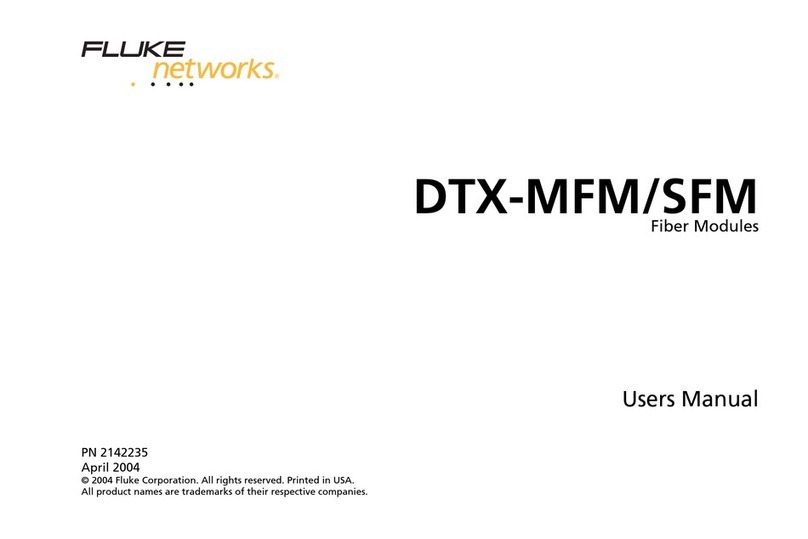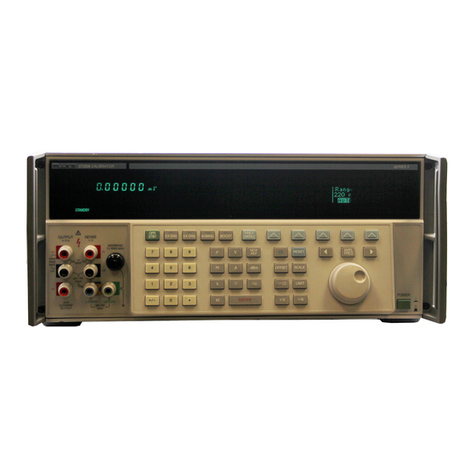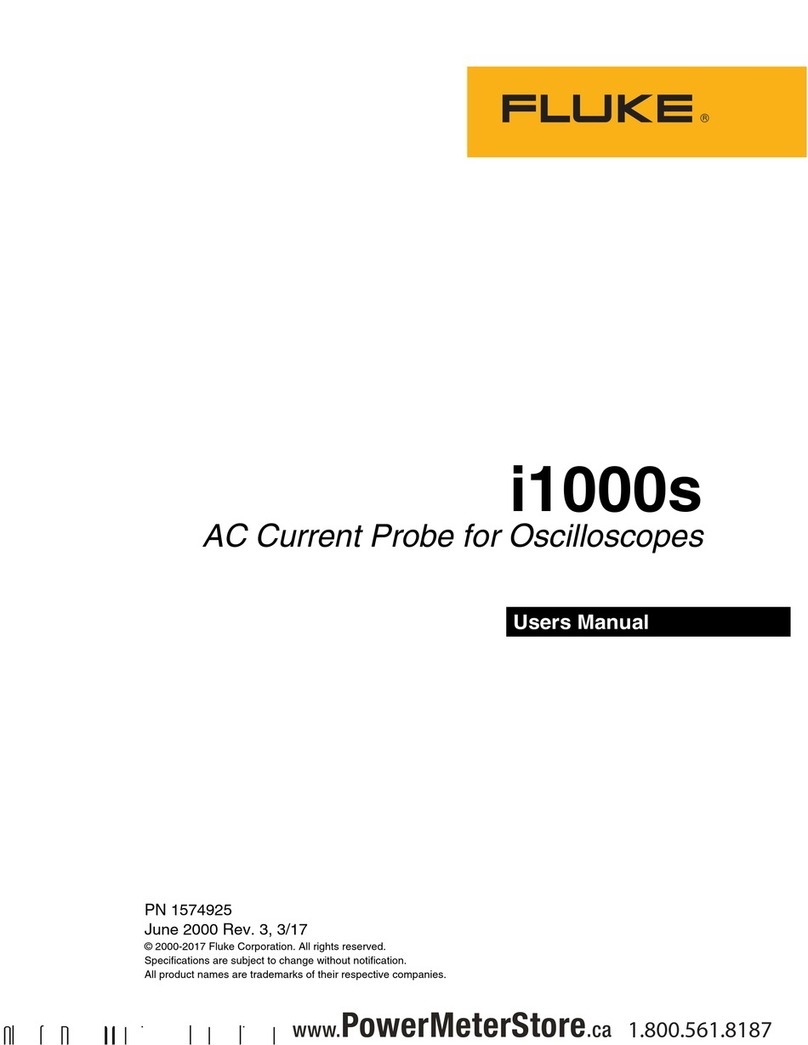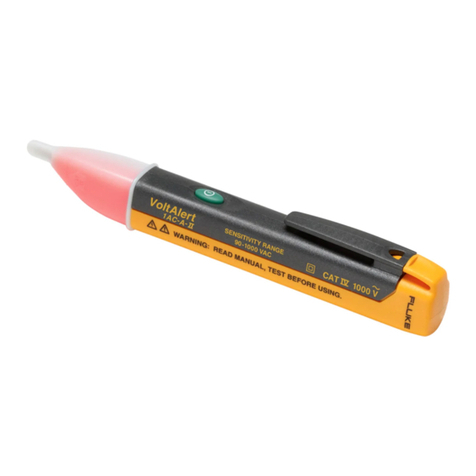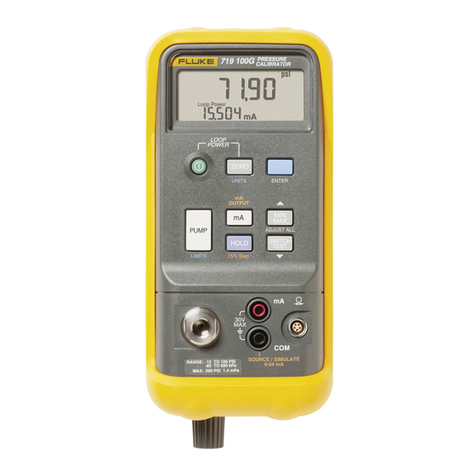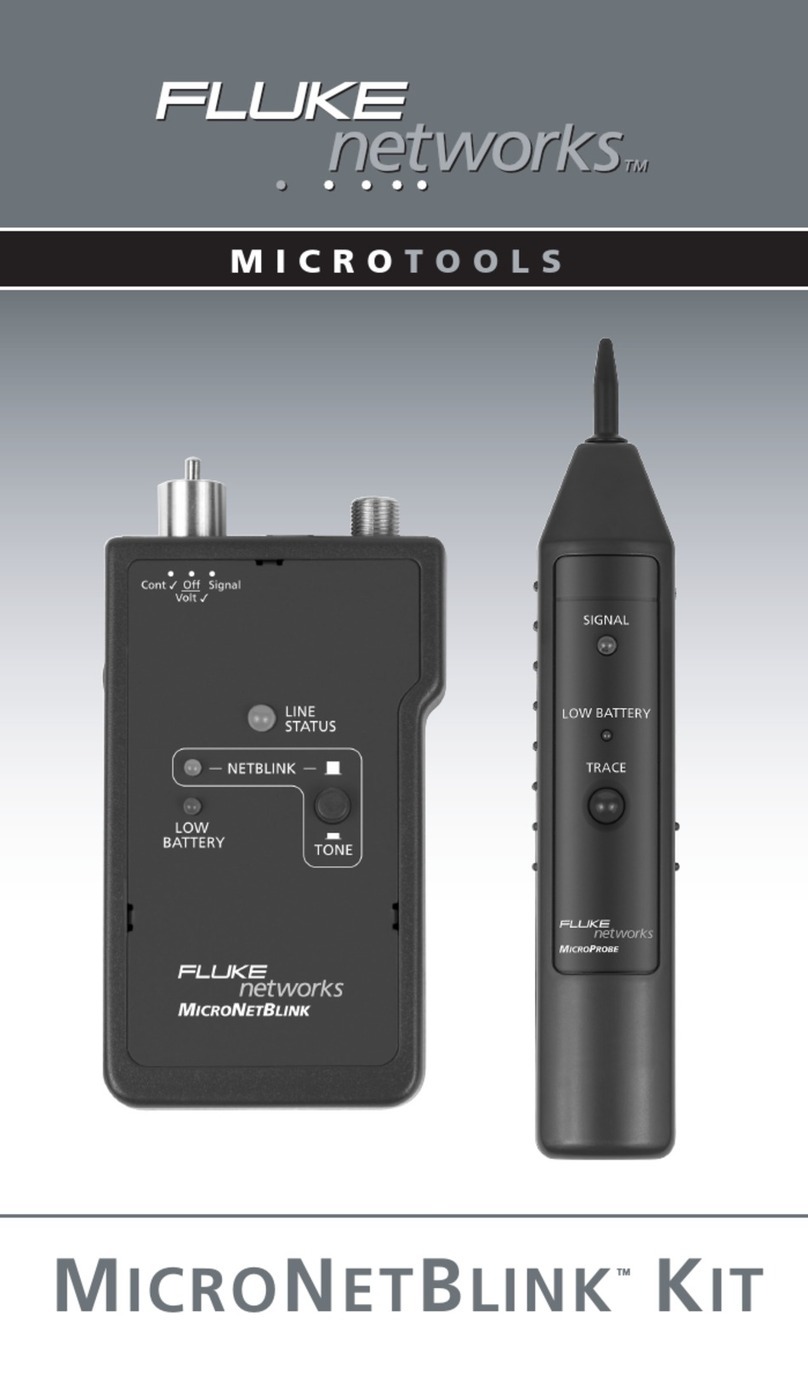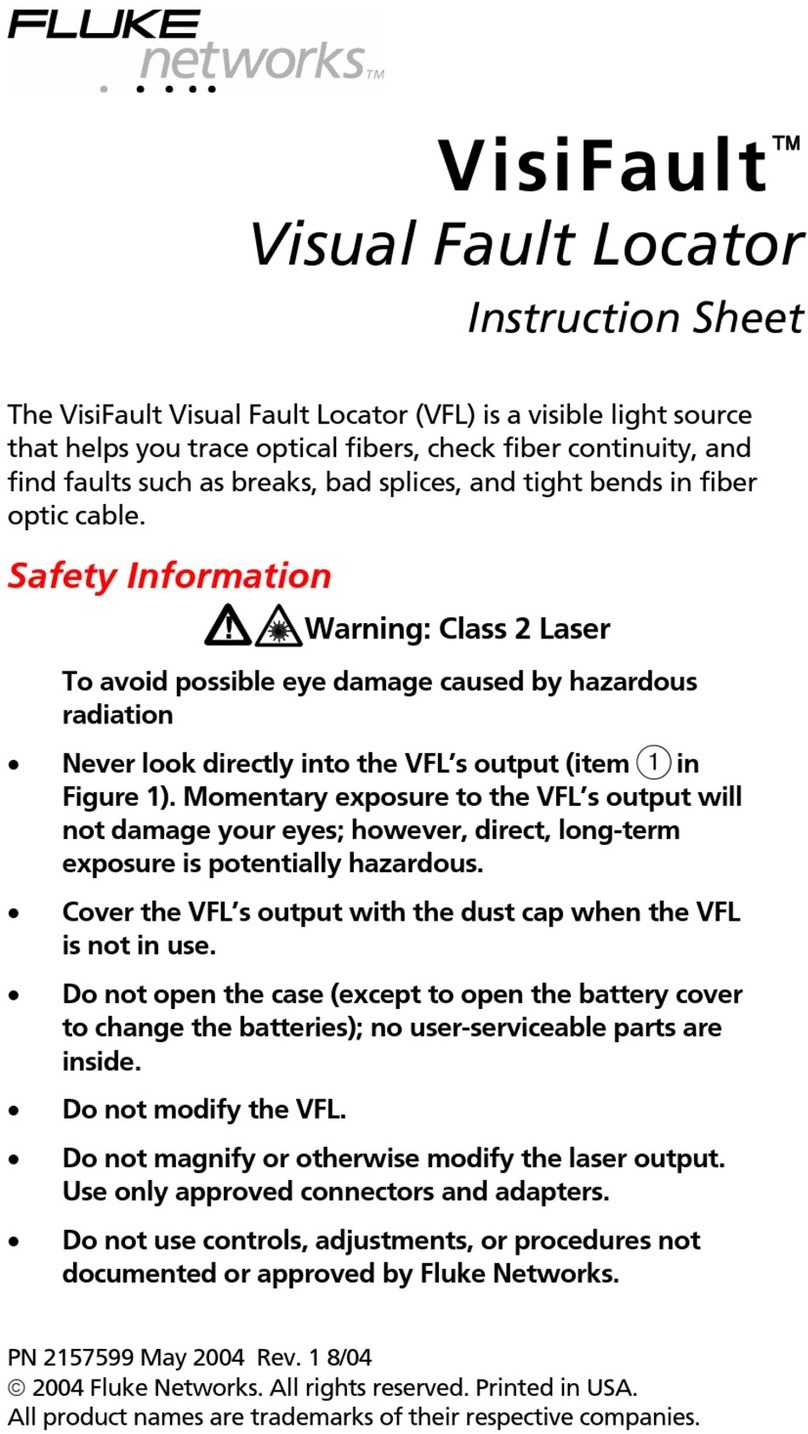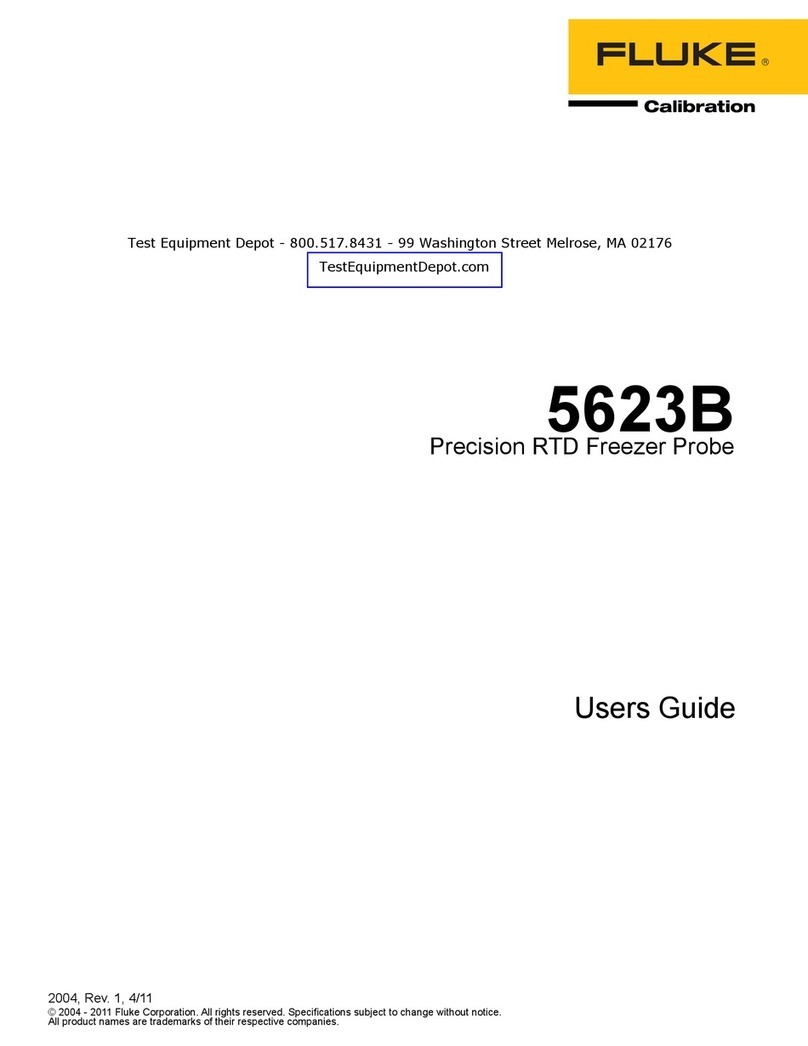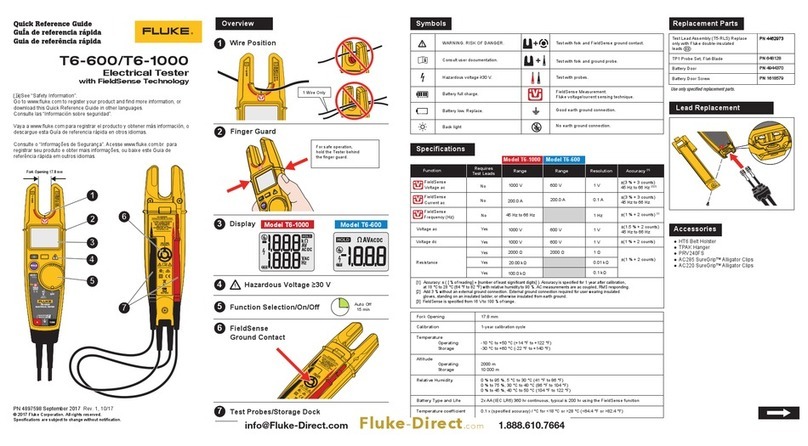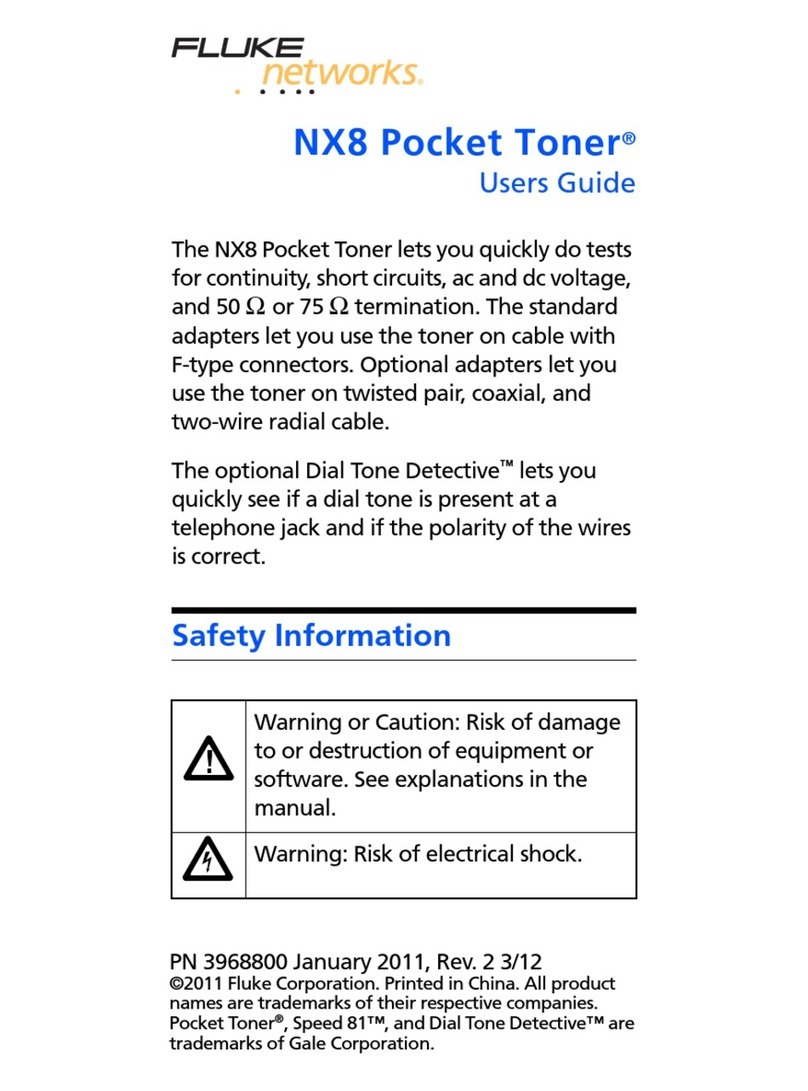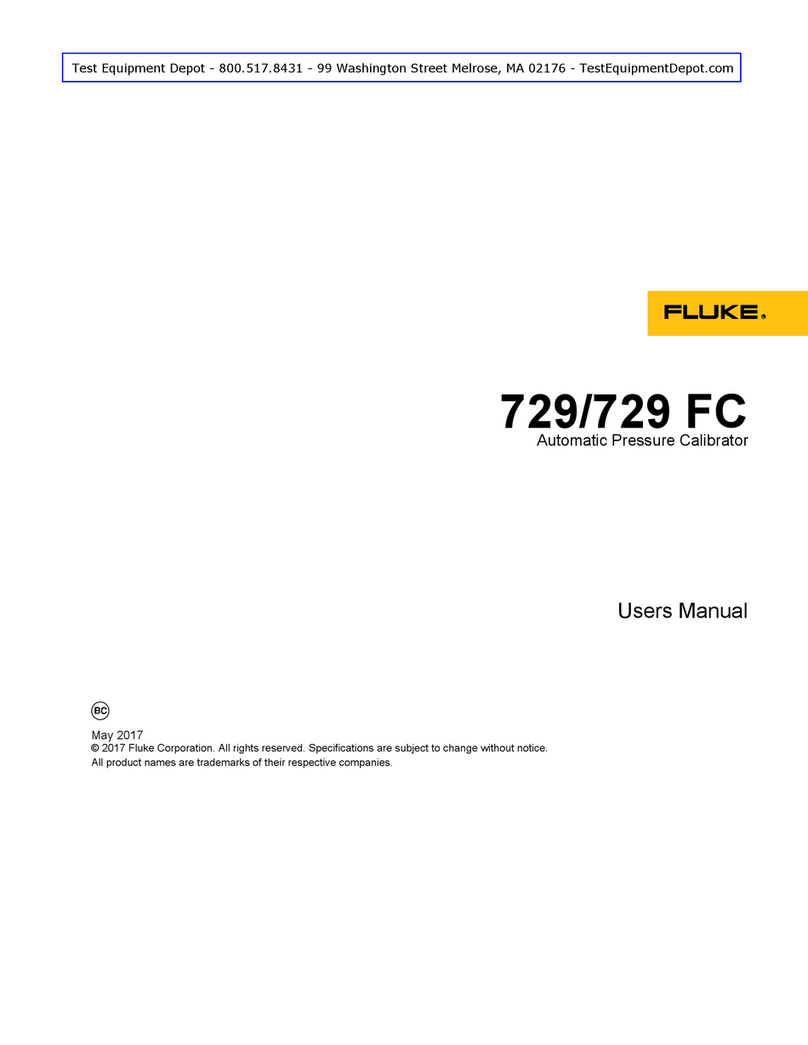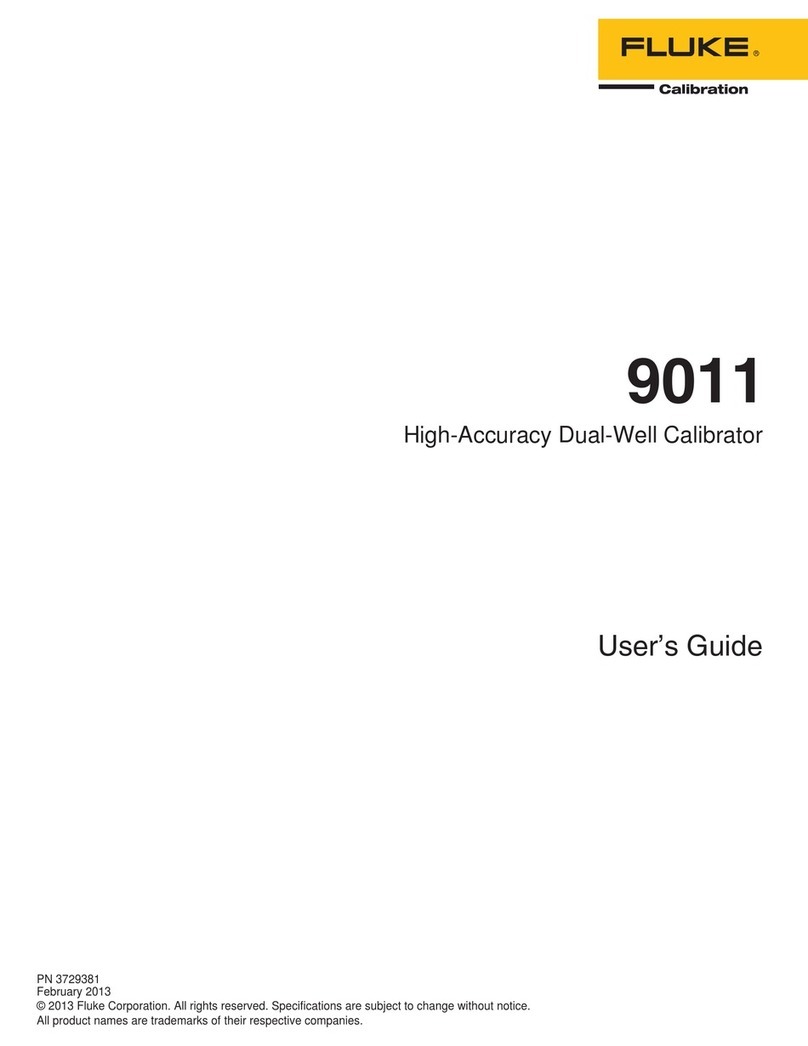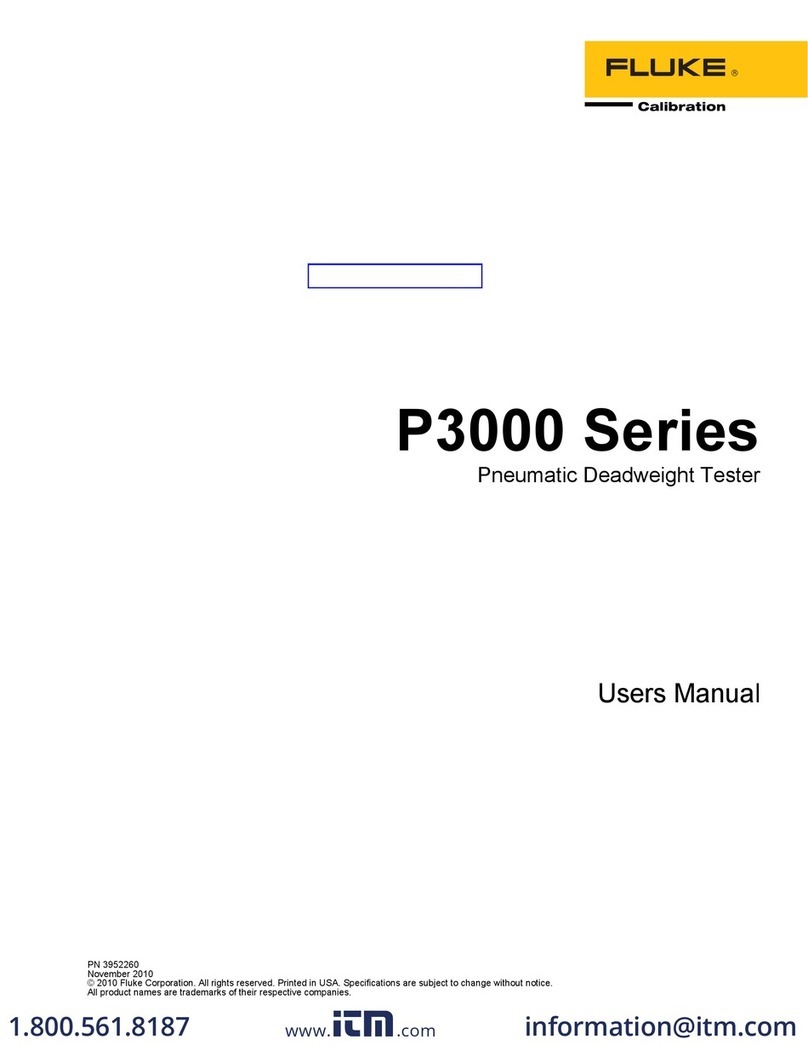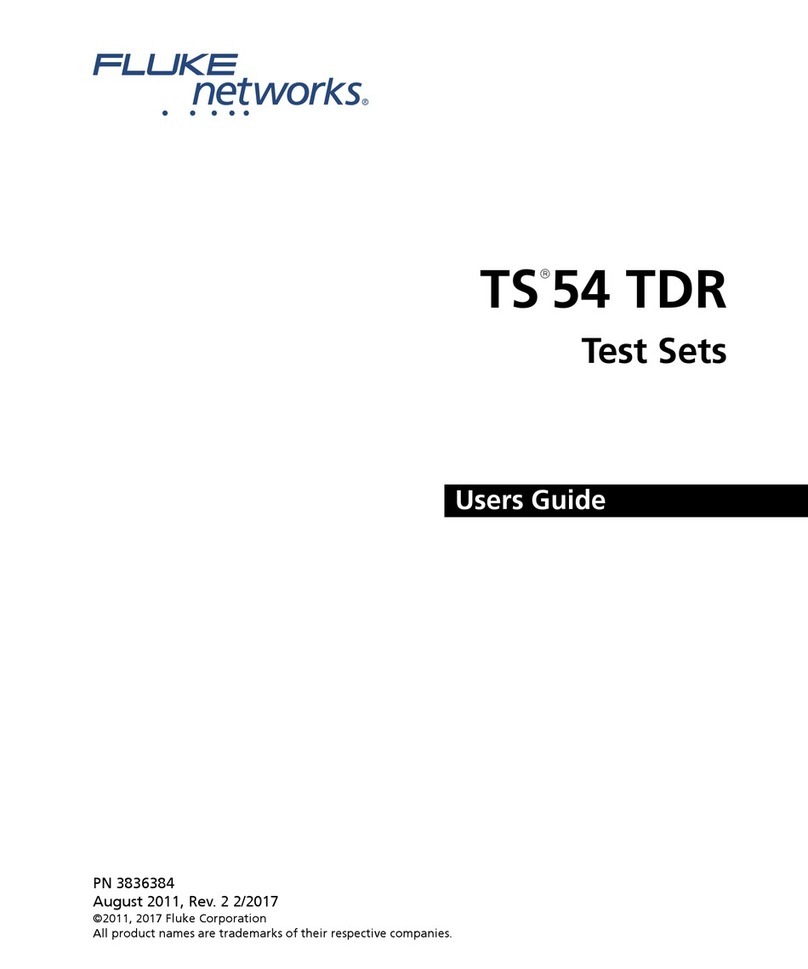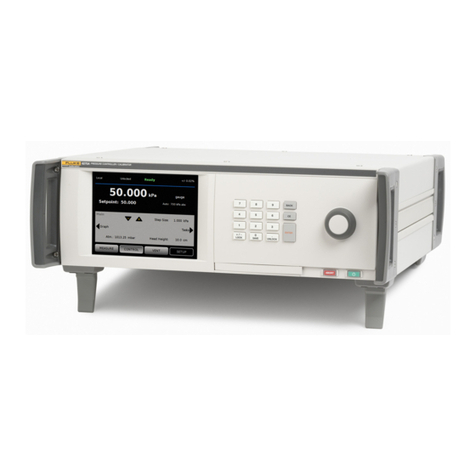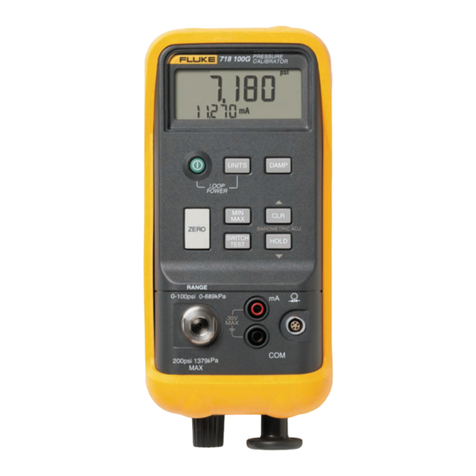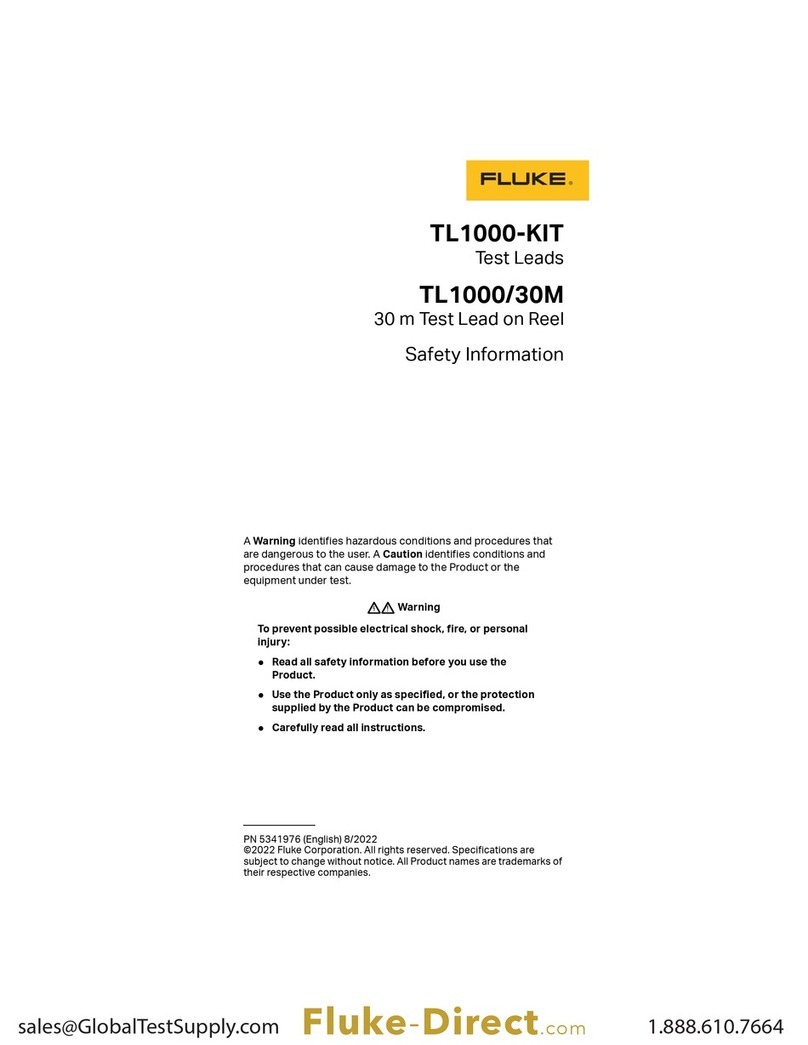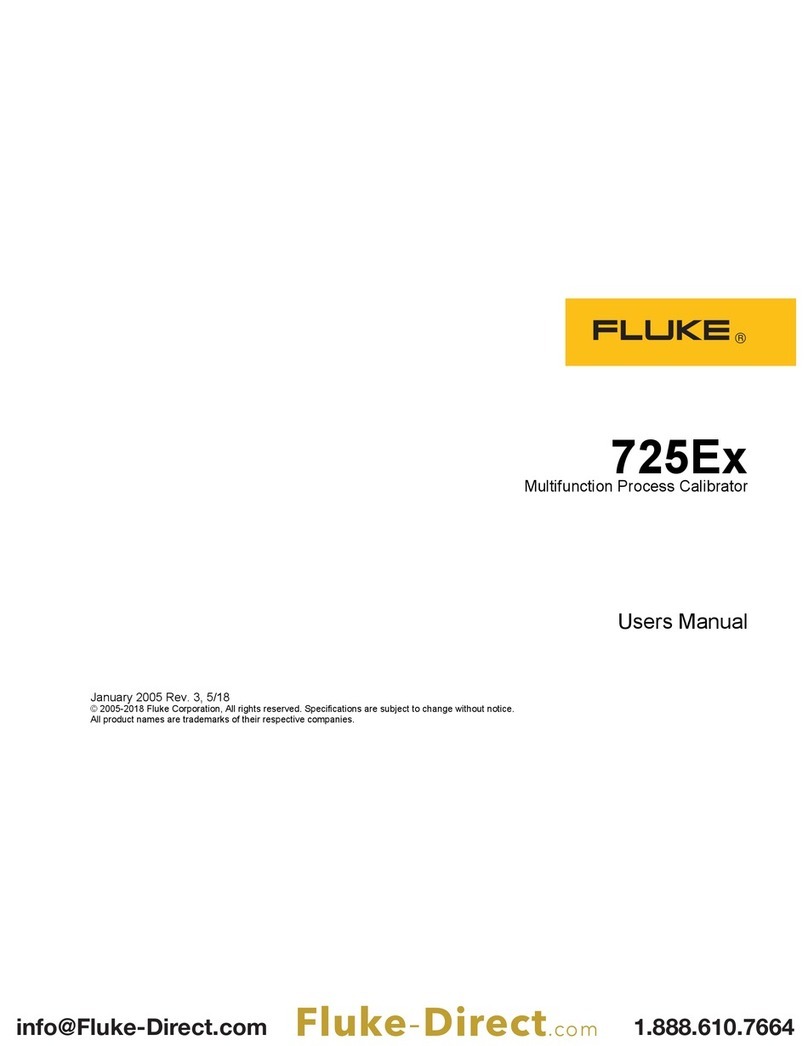
1535/1537
Calibration Manual
2
Safety Information
A Warning identifies hazardous conditions and procedures that are dangerous to the user. A Caution
identifies conditions and procedures that can cause damage to the Product or the equipment under test.
XW Warning
To prevent possible electrical shock, fire, or personal injury:
•
Carefully read all instructions.
•
Read all safety information before you use the Product.
•
Do not alter the Product and use only as specified, or the protection supplied by
the Product can be compromised.
•
Do not use the Product around explosive gas, vapor, or in damp or wet
environments.
•
Do not use the Product if it is altered or damaged.
•
Disable the Product if it is damaged.
•
Do not use the Product if it operates incorrectly.
•
Use Product-approved measurement category (CAT), voltage, and amperage
rated accessories (probes, test leads, and adapters) for all measurements.
•
Do not exceed the Measurement Category (CAT) rating of the lowest rated
individual component of a Product, probe, or accessory.
•
Do not use in CAT III or CAT IV environments without the protective cap installed
on test probe. The protective cap decreases the exposed probe metal to <4 mm.
This decreases the possibility of arc flash from short circuits.
•
Comply with local and national safety codes. Use personal protective
equipment (approved rubber gloves, face protection, and flame-resistant
clothes) to prevent shock and arc blast injury where hazardous live conductors
are exposed.
•
Examine the case before you use the Product. Look for cracks or missing
plastic. Carefully look at the insulation around the terminals.
•
Do not use test leads if they are damaged. Examine the test leads for damaged
insulation, exposed metal, or if the wear indicator shows. Check test lead
continuity.
•
Do not touch voltages >30 V ac rms, 42 V ac peak, or 60 V dc.
•
Do not apply more than the rated voltage, between the terminals or between
each terminal and earth ground.
•
Measure a known voltage first to make sure that the Product operates correctly.
•
Limit operation to the specified measurement category, voltage, or amperage
ratings.
•
The battery door must be closed and locked before you operate the Product.
•
Connect the common test lead before the live test lead and remove the live test
lead before the common test lead.
•
Remove all probes, test leads, and accessories before the battery door is
opened.
•
Remove all probes, test leads, and accessories that are not necessary for the
measurement.
•
Keep fingers behind the finger guards on the probes.
•
Replace the batteries when the low battery indicator shows to prevent incorrect
measurements.
•
Use the correct terminals, function, and range for measurements.
